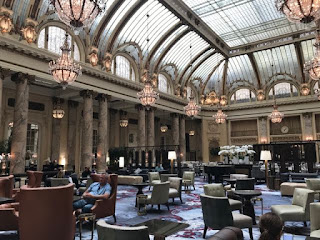House shook violently.
Pictures still on hooks, but at slants.
Things fell out of bathroom cabinet, off shelves.
I'll update this.
UPDATE 8:50am
There was an aftershock, not as violent, but still one of the strongest earthquakes I've felt (I grew up in LA and went through the 1971 earthquake, plus numerous ones here in Anchorage)
Some pictures inside our house.
UPDATE: 9:01 - a second smaller aftershock. Earthquake Center says preliminary estimate was 7.0 10 miles north of Anchorage. I've been in 7.0 before and this was far, far stronger. But that has to do with how close you are to the epicenter. We apparently were close.
Update 9:14am - Another very minor aftershock. Here's a map from the USGS website:
 |
| Click to enlarge and focu |
The shaking must be related to how close this was - very.
UPDATE 9:17: Another Tweet from the Alaska Earthquake Center - I'll just copy the text so it's easier to read:
Tweets
AK Earthquake Center
Verified account
@AKearthquake
1m1 minute ago
More
Fortunately we are headquartered in Fairbanks, so we're fully operational up here with the exception of the website slowdown. We do not yet have much information about the situation on the ground in Anchorage beyond widespread power outages and non-specific reports of damage.
As you can tell - at our house the electricity is still working - internet connection is ok. We are just west of the UAA. Water and gas are working.
UPDATE 9:21 - I had looked out the window just before the earthquake hit and saw - another aftershock as I'm writing, but just creaking - the school bus pull up to pick up kids. After the earthquake, I looked out again and saw it drive away.
UPDATE 9:29am Here's a message - apropos my last update - from the School District

UPDATE 10:09 am - Well we went to check on downstairs. It looked ok, but the door to the downstairs bedroom was closed and something behind it was blocking it. There were some old mirrors and pictures behind the door. After some experimenting, I was able to get my hand through the door and to push them back far enough to open the door. Here's a picture of them after we got in.
It was the book case that I was worried about. Attaching it better to the wall was still on my todo list. But it was fine. Not one book fell off.
I assume the shaking is more severe on the second floor than on the first floor. But it also looks like the house shook east/west. This book shelf is facing north. But then I went into the garage and two shelves had fallen over. These were west facing walls that the shelves fell from.
Another minor rattle as I'm putting up these pics.
But my
$90 million David Hockney picture was fine right next to the shelf above.
The pictures on the wall along the stairs were fine (the wall faces east.)
And in the kitchen all was ok - I've been worried about the wine glasses all along. It's looks like things moved inside the cabinet about 1/2 an inch east, but everything was ok. The cabinet door was closed.
UPDATE 10:26: Just had another aftershock - Not terrible, but something I would have blogged about - clearly more shaking but just a few seconds.
UPDATE 10:47 - Getting phone calls and messages from folks outside. We're ok. But here's a
link to a Twitter feed from Dustin Miller that is collecting Tweets about the earthquake. There's some serious damage around town.
It looks like the Minnesota Offramp to International Airport Road collapsed. Screenshot is from a tweeted video on on Dustin's Twitter thread.
UPDATE 12:46PM Just talked to the manager at the Bear Tooth Theater where the Anchorage International Film Festival was supposed to have its opening night tonight. The theater has been damaged and there will be NO FILMS today. They aren't sure about tomorrow.














































